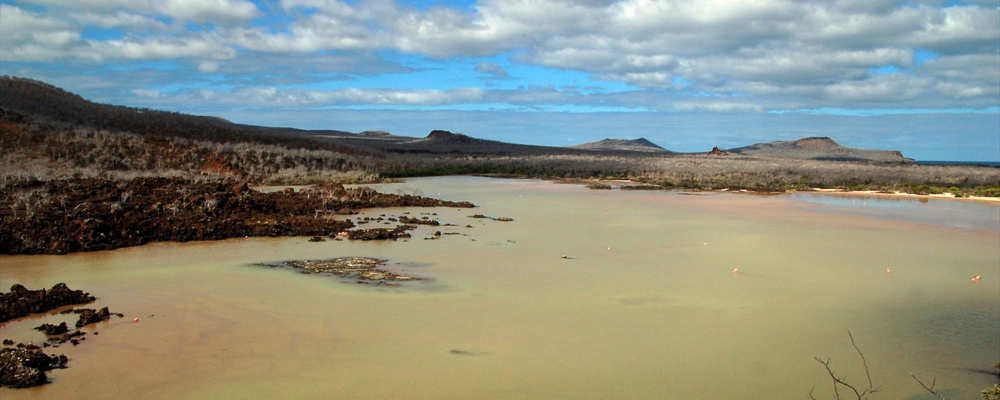
Galapagos Islands
( 1 user review )The Galapagos Islands are a small archipelago of islands belonging to Ecuador in the eastern Pacific Ocean. The islands are quite remote and isolated, lying some 1000 km (620 miles) west of the South American continent. The Galapagos archipelago consists of 13 main islands and 6 smaller isles, which together embrace some 50,000 sq km (19,500 sq miles) of ocean.
Understand
The Galápagos archipelago is world-renowned for its unique and fearless wildlife- much of which was inspiration for Charles Darwin's Theory of Natural Selection. The islands are therefore very popular amongst natural historians, both professional and amateur. Giant tortoises, sea lions, penguins, marine iguanas and different bird species can all be seen and approached. The landscape of the islands is relatively barren and volcanic, but beautiful nonetheless. The highest mountain amongst the islands is Volcán Wolf on Isla Isabela, 1707 m (5600ft) high.
The Galápagos were claimed by newly-independent Ecuador in 1832, a mere three years before Darwin's visit on the Beagle. During the 19th and early 20th centuries, the islands were inhabited by very few settlers and were used as a penal colony, the last closing in 1959 when the islands were declared a national park. The Galapagos were subsequently listed as a World Heritage Site in 1978.
Strict controls on tourist access are maintained in an effort to protect the natural habitats and all visitors must be accompanied by a national park-certified naturalist tour guide.
Climate
The Galapagos Islands have a highly variable climate, as does Ecuador's mainland. There are two seasons in the islands: the hot/rainy season, from December to June, when humidity is high and average temperatures are in the 80s F (26°-30° C). There may be occasional showers, but the days are generally warm and sunny.
From June to November, you can expect cool winds, occasionally bringing with them a light misty-type drizzle called "garúa." Temperatures average in the 70s F (20°-24° C) during the day and lower at night.
Each month brings unique climate variations and wildlife viewing opportunities. Peak season for naturalist tours is typically December through May when the seas are the calmest and the weather the warmest. However summer months June, July and August are also very popular as the animals are more active. September through November is typically low season when most boats will leave the islands for dry dock. For divers peak season is from July - November when whale sharks can be found and Wolf & Darwin.
Getting there
Visiting the Galapagos is not cheap, owing to travel restrictions and the remote nature of the archipelago. The only way to get in the islands from the main land is by plane from Guayaquil or Quito airports. Flights travel to the Galapagos in the morning and return in the afternoon, typically requiring a forced overnight on the continent in each direction.
By plane
Flights to the Galapagos are relatively easy to arrange and depart from Quito and Guayaquil on a daily basis for the Isla Baltra airport, about two hours by public transport from Puerto Ayora, the main settlement of the Galapagos, on the central island of Santa Cruz. There are also daily flights to San Cristóbal. The airport is a 20 minute walk from the center of Puerto Baquerizo Moreno.
Flights from Guayaquil are slightly less expensive than from Quito, however as there is more availability from Quito as there are typically 2 flights a day from Quito and only 1 from Guayaquil.
Both Aerogal and Tame have flights to the Galapagos. The price is the same for both companies, for foreigners around $405 from Quito and much cheaper (around 360$) from Guayaquil. Eucadorians pay half the price and there is a 15% discount on TAME flights and a 20% discount on Aerogal flights if you have an ISIC studentcard. The price is usually ~$50 cheaper during the low season (May and September).
It's not possible to buy a one way ticket without proof of transportation from the islands. It's easy however to change the date of your return ticket or to switch your departure to another island.
By boat
Private yachts can arrive into any of the 5 ports in Galapagos while in transit and remain at that port for a maximum of 21 days. Boats wishing to visit more than one site or cruise the islands may do so but only by special permit from the national park and by working with a licensed yacht agency.
There are cargo boats that travel to the Galapagos each week. However these boats are not allowed to take travelers on board.
Traveling around
By boat
Seeing the sites and wildlife of the Galapagos is best done by boat. Most people book their place well in advance (as the boats are usually full during the high season). Booking a boat tour with a company in your home country is usually the most convenient, but is often considerably more expensive.
There are a VAST number of companies that can book accommodation on a Galapagos tour either in Puerto Ayora or from Guayaquil or Quito. While it is possible to get a last-minute deal, be aware that many budget tours may spend extra time in Puerto Ayora, might not have the best boats, and may only visit the inner islands.
When looking for a tour consider the following:
-
Number of passengers. The national park restricts the size of the boats allowed to cruise the islands. It further regulates some sites like Genovesa for example (the best islands for bird lovers) to and only boats under 40 passengers are allowed to visit there. Though the maximum size boat permitted to cruise the islands is 100 passengers, as you might imagine 100 people showing up on a beach all at the same time can be Going ashore at the same time as 100 other people can be overwhelming to the local wildlife. All passengers will be divided up into a maximum group size of 16 passengers per naturalist guide. Therefore t is generally best to travel on a boat with fewer passengers (between 16 and 32 passengers is ideal).
-
Itinerary. The National Park sets all of the cruise itineraries. Each itinerary is designed to have a mixture of habitats and show case the diversity of the islands by combining the Southern Espanola and Floreana, Central, Western Fernandina, Isabela or Northern Genovesa Islands. Most boats will visit 2 or 3 of these areas during a week.
-
Availability. Most of the best cruises are booked up months in advance, so best to book early.
-
Level of Activity. Visits to the islands are only permitted during the twelve hours of daylight 6am to 6pm. Typically a cruise will have two excursions each day a morning and an afternoon that will be a combination of shore and water excursions. Walks are generally at a slow pace offering plenty of time for interpretation and photos. The landings may be slippery and some trails can be rocky making them difficult for older people with balance problems, but in general the walks are easy. Water excursions may include snorkeling, kayaking, panga rides (rides in local dinghies) as well as rides in a glass bottom boat depending on your cruise. Life under the water is more diverse than that on shore and snorkeling with sea lions is frequently the highlight of the trip for many visitors.
-
Additional costs. Many tours do not include the $100 park entry fee or the cost of a flight from the mainland to the islands (apx. $420 from Quito) as well as a $10 Transit Control Tax. Additionally less expensive boats will charge for beverages, use of snorkel equipment, wetsuits and kayaks.
-
Time spent in the islands. The cruise length includes the day you arrive and the day you depart the Galapagos. Flights typically arrive the islands around noon time or in the early afternoon and leave the islands about the same time. On your first day you will typically have 1 excursion and on the day you leave you may or may not have an excursion. In addition all 8 day cruises are required to visit the town of Puerto Ayora and the Charles Darwin Research. Many itineraries will combine this day with a visit to see the tortoises in the wild in the highlands of Santa Cruz. Shorter cruises will take advantage of the close proximity of the Baltra airport to Puerto Ayora and let passengers who boarded the cruise in San Cristobal leave the cruise in Santa Cruz or vise-versa.
-
Type of boat. Quality of boats varies widely. Less expensive tours use boats that may not be capable of traveling as quickly between islands, be as comfortable, or be as well-maintained.
Note that while the majority of the islands will be off-limits without a guide, it is possible to travel via speed boat between the towns on San Cristóbal, Santa Cruz and Isla Isabela; trips to Floreana can also be arranged. These trips cost $30 one-way, but some people have got them for $25 when they ordered a return-ticket with an open return date. Each of these islands offers the possibility of joining organized local daytrips or of traveling on your own while within the town limits.
Hotels and hostels are available on each of these islands from $25-$500+, while hotels along the water are generally full especially in Santa Cruz. During peak season (Christmas & Easter weeks) as well as during special events all hotels are frequently sold out well in advance. However, if you are traveling at other times of the year you may be able to find availability by just showing up.
From Santa Cruz it is possible to book day trips to the uninhabited islands of North Seymour, South Plazas, Santa Fe and Bartolome. Advance reservations are normally required, however on occasion you can find space due to a last minute cancellation the night before.
Budget
Mid-range
-
Adventure Life , Recognized by National Geographic Adventure as one of the
-
Cultural & Natural Heritage Tours , A company whose specialty is a 13 day active trip that includes 8 days cruising the islands, a full day on land in Puerto Ayora, and two days in Quito. This trip offers much more activity than the standard Galapagos trip. CNH Tours uses the M/Y Samba as its ship of choice and their guide is Juan Manuel Salcedo, the ship's owner, a resident of Galapagos.
-
Enchanted Expeditions (formerly Angermeyer's Enchanted Expeditions) , Enchanted Expeditions is in its fourth decade of operating tours in Galapagos and mainland Ecuador. Enchanted Expeditions is the exclusive representative of their own yachts Beluga (Superior First Class) and Cachalote I (First Class).
-
Galanet , +00 593 42 340 315, Operates the 16 passenger Daphne yacht.
-
Galapagos Legend , Operates the 100 passenger Galapagos Legend, one of the larger boats operating in the islands. Landing opportunities are limited due to the large number of passengers, but this ship offers a less-expensive way to visit some of the more popular sites within the Galapagos. Many booking agents will book rooms on this boat, so check around for discounted rates.
-
M/V Galapagos Explorer II , Along with the Galapagos Legend, this is the other 100 person boat that operates in the islands. While most small landing sites are unavailable to this boat, it does provide a less-expensive alternative for seeing some popular destinations within the Galapagos. Booking agents throughout Ecuador offer passage on this boat, so shop around for best rates.
-
Galapagos Online Tours & Cruises, With over 20 years experience selling Galapagos - Galapagos online offers a variety of products in the Galapagos Islands including Multisport Adventures, Island Hopping Trips, Private Home rentals and Custom tours
-
Red Mangrove Galapagos Lodges , This company owns three lodges on Santa Cruz, Floreana and Isabela and offer a
-
SharkSky Ecoadventures Galapagos , Offers regular Island Hopping, but also Multisport, Adventure, Camping tailor made tours. Flexibility and assistance. They also offer dive tours.
-
Volcanika Adventures , Offers luxury and standard island hopping tours in the archipelago. They are a bilingual, locally owned family business and they strive to promote sustainable eco-tourism and conservation in the islands. Custom or 4, 5 and 8 day trips are available.
Splurge
-
Cheeseman's Ecology Safaris , An American company that specializes in high-quality trips. Cheeseman trips will always include at least one naturalist in addition the to park guide, and are geared towards photographers and nature lovers. All Cheeseman trips are non-smoking, and most Galapagos trips are 11 days.
-
Galapagos Odyssey yacht , The Galapagos Odyssey is a luxury class yacht built entirely in Guayaquil - Ecuador, true pride of
-
Galapagos Travel (US) , An American company that specializes in 11 and 15 day trips around the islands. This company caters to photographers and provides service in luxury-class yachts with extensive itineraries.
-
Galapagos Travel (Ecuador) , Ecuador based tour operator offering 3, 4 and 7 night cruises on board the luxurious catamaran M/C Anahi, cruises feature a Galapagos Park guide, cruise director and 11 crew members to pamper 16 guests throughout a natural history tour visiting the less visited excursion sites in the archipelago.
-
INCA (International Nature & Cultural Adventures) , INCA is an American company with unique itineraries on the luxury, 16-passenger small yachts M/V Integrity and M/V Reina Silvia. All INCA Galapagos adventures feature 7-night cruises including outlying islands, and most include stays at the Royal Palm Resort on Santa Cruz. Private trips available on either yacht. Options for Amazon, Otavalo and Machu Picchu.
-
Metropolitan Touring , Metropolitan Touring was one of first companies to start Galapagos Islands Cruises. Tours are on large boats (50 passengers) with itineraries of 4, 5 and 8 days.
-
SunWind Travel , An Ecuadorian company with offices in Galapagos, Quito and Florida. SWT charter the finest yachts and arrange high quality cruises. Owners are +20 year-experienced level III naturalist guides.
See
On each island, the number of visitors are limited and there are only a small number of official landing and visitor sites. You must follow the instructions of your guide to protect the wildlife and you are not allowed off the marked paths. This is not a problem as the animals are so tame they will sit right on the path or cross it without caring about mere tourists.
The Charles Darwin foundation administers several research stations throughout the islands, including a large station in Puerto Ayora that is worth visiting for its animal and natural history exhibits, the Galapagos Interpretation Center in Puerto Baquerizo Moreno and the Tortoise Breeding Center the most interesting of the breeding centers in Puerto Villamil.
Things to do
Recommended activities
-
Climb the hill on Bartolome for the classic Galapagos view
-
Visit the Giant Tortoise breeding and rearing program at the Charles Darwin Research Centre on Santa Cruz.
-
See the red neck sacks of the Magnificent Frigatebird on North Seymour.
-
Visit unique and color species like the Galapagos penguins on Isabela or Floreana.
-
Go snorkeling with sea lions and pacific sea turtles as often as possible.
Snorkeling & Scuba Diving
Snorkeling and diving are very popular activities as the sea life is so rich and colourful.
Snorkeling equipment should be available from your tour operator (but check first) if you don't have your own. You may also want to bring a waterproof camera. Remember to wear at least a T-shirt and suntan lotion if you are snorkeling, as it's all too easy to get sunburnt in the strong sun. Snorkeling offers a way to be in the water with fish, sea turtles, sea lions, and other creatures and is a great option for those who don't have scuba certification.
Diving in the Galapagos is incredible as noted by Rodale's Scuba Diving Magazine. Ranked as the best dive destination in the world for several years in the categories of healthiest marine environment, best big animal dive and best advanced diving. That said, the Galapagos is not necessarily the right place for beginners or novices. Currents, surge, cold water, and sometimes poor visibility and depths make this a challenge. Certification courses are available in both Santa Cruz and San Cristobal for those looking to learn, and there are several dive sites that are relatively beginner-friendly.
There are 3 ways to dive in the Galapagos Islands:
-
Daily dives with a local tour operator, primarily from Santa Cruz and San Cristobal.
-
Galapagos island-hopping dive trips
-
Galapagos liveaboards.
Two of the world's premier diving destinations, Darwin Island and Wolf Island, are accessible only via expensive live-aboard charters. These islands present challenging currents and are not suitable for beginners, but offer amazing opportunities to see huge schools of hammerhead sharks and occasional whale sharks, amongst many other large animals. Other areas within the park offer opportunities for swimming with sharks, sea turtles, and a vast number of fish species.
Note that park regulations may change unexpectedly; in 2007, many divers were caught unaware as the National Park withdrew diving permits from quite a few cruise ships without notice, leaving many divers without dive cruises they had booked far in advance. For this reason, travelers are advised to get the most up-to-date information possible when planning a dive trip to the Galapagos Islands. In 2010, the National Park is now regulating land-based diving for the first time and few of the many shops operating have the new permits necessary.
Sleep
There are hotels and other accommodation in the towns of Puerto Ayora, Puerto Villamil and Puerto Baquerizo Moreno, however if you really want to see lots of good wildlife, you will need to combine your stay on these islands with daily boat tours to other islands.
Etiquette
The park is strictly regulated. Outside of the towns visitors must be accompanied by guides, and visitors are only allowed on land from sunrise until sunset. Itineraries must be registered with the park prior to embarking on a trip, and animals should never be disturbed; while the wildlife in the Galapagos will usually ignore your presence, a general rule of thumb is that if an animal notices your presence then you are too close. Two meters is generally given as a minimum distance to keep away from animals; you will find that if you are calm and respectful that many animals will walk right up to investigate you.
One of the greatest dangers to the islands is introduced species. The park service is trying to eliminate goats, rats, cats, dogs, and introduced plant species on many of the islands, but it is a difficult battle; after evolving for thousands of years without predators, the Galapagos wildlife is not adapted to handle these new species. When traveling to the islands, do not bring any plant or animal life with you, and be sure to always clean your footwear when traveling between islands to avoid accidentally transferring seeds.
Illegal fishing is another threat to the park. Although park officials may deny it, illegal fishing for sharks and sea cucumbers occurs on a massive scale. The number of fishermen has increased rapidly over the last few years, while the number of fish have plunged. Due to ongoing tensions between fisherman, tourism, and science the level of enforcement of fishing laws can vary greatly, but even when policies are put in place to limit fishing enforcement is difficult due to the resources required to patrol the vast park area.
Another big threat to the park is the growing population. Although new rules make it impossible for people arriving from the mainland to live and work on the islands, the rules are hardly enforced, resulting in many people immigrating from the mainland to make quick money on the islands.
Safety
In general, crime is not a problem in the Galapagos. Petty crime may occur in the towns, and occasionally fisherman will stage strikes or demonstrations that affect tourists, but for the most part there is little to be concerned about. It should be noted, however, that some items that have been reported missing have been found in the crews' quarters! As most boats do not have lockable cabins, it might be advisable to keep your items locked away in bags in your cabins.
The animal life in the islands is mostly docile with the exception of the large bull sea lions. These animals will vigorously protect their harems, and can inflict dangerous and potentially deadly bites. Do not snorkel close to sea lion colonies. If a bull sea lion approaches you, swim away from the nearest colony. Note that it is only the bulls that are dangerous; swimming with juvenile sea lions can be one of the most exciting parts of a trip.
In addition to sea lions, there is a minimal danger from sharks. In general sharks will not attack unless provoked, although attacks can sometimes occur in murky water when sharks mistake humans for other animals. However, by exercising simple common sense experiences will be almost always be positive.
The Islands
-
Baltra (an airport and military base)
-
Bartolome
-
Darwin & Wolf
-
Espanola
-
Fernandina
-
Floreana
-
Genovesa
-
Isabela - the largest island
-
Marchena
-
North Seymour
-
Pinta
-
Pinzon
-
Rabida
-
San Cristobal
-
Santa Cruz - the main island and population centre
-
Santa Fe
-
Santiago
-
South Plaza
Towns
-
Puerto Ayora
-
Puerto Baquerizo Moreno
-
Puerto Villamil
-
Puerto Velasco Ibarra
The codified park rules are:
-
To visit the National park you must always be accompanied by a certified Galapagos National park guide.
-
Galapagos is a unique and fragile environment. Take only photographs and video. Professional shooting needs authorization from the National Park.
-
Please stay within the limits of the walking trails, for your safety and that of the flora and fauna.
-
To avoid affecting the wildlife's natural behavior please avoid getting closer than two meters to the animals.
-
Camping is only allowed in specific sites. If you wish to camp, you must first obtain a permit from the Galapagos National Park.
-
Help conservation by cooperating with the authorities in their inspection, monitoring and control duties. Report any anomalies to the National Park.
-
Do not introduce foreign organisms to the islands, as these can have a negative impact on the ecosystem.
-
Please do not buy souvenirs which are made from black coral, sea shells, sea lion teeth, tortoise shell, volcanic rock or endemic woods.
-
Galapagos animals have their own feeding behavior. Never feed the animals. Feeding them can be detrimental to their health.
-
Galapagos landscapes are beautiful and unique. Do not spoil them by writing or etching rocks or trees.
-
Do not litter while on the islands. Always dispose of rubbish in a safe and appropriate way.
-
Smoking or making camp fires in the national park areas is forbidden and can cause devastating fires.
-
Fishing is strictly forbidden, except on those boats specifically authorised by the Galapagos National Park for that purpose only.
-
Jet skiing, submarines, water skiing, and aerial tourism are all forbidden.
Contact & location
1 Review
Add your review
The photos displayed on this page are the property of one of the following authors:
chany crystal, Graham Racher, ntn6, Mark Rowland, Chris Willis, alh1, Michael R Perry
Some photos courtesy of:
 . The photos provided by Flickr are under the copyright of their owners.
. The photos provided by Flickr are under the copyright of their owners.
This travel guide also includes text from Wikitravel articles, all available at  View full credits
View full credits
jan, Ryan Holliday, Brad Moss, bretmchls6@gmail.com, Peter Fitzgerald, Ronny Farkash, Tapir Lodge, Daniel Samaniego, renato gregorini, isadorion@hotmail.com, Jonathan Angermeyer, David Sickmiller, Zvika Ben-Haim, David, Jim Hammerel, Steven Hines, Andreas Bjärlestam, Gonzalo Alvarez, Todd VerBeek, Bas en Eelco, Niels Elgaard Larsen, Todd Smith, Tom Holland, Bill Johnson, Daniel Cowan, Jani Patokallio and Colin Jensen, Movera, Vidimian, Tatatabot, Inas, Edmontonenthusiast, Shaund, Dox, MarinaK, Morph, Airin, Azure8472, Ronald, Hypatia, Estebs, Nzpcmad and Pjamescowie
This travel guide also includes text from Wikipedia articles, all available at  View full credits
View full credits


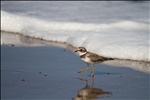
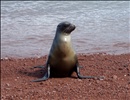




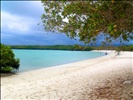
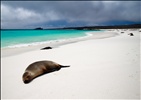


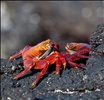



I liked
I went to Galapagos with my family, we visited so many places in there, thanks to http://www.galapagoscruises.com we had a really good Cruise. The most beautiful place is the Española Island, you MUST VISIT!I disliked
Nothing